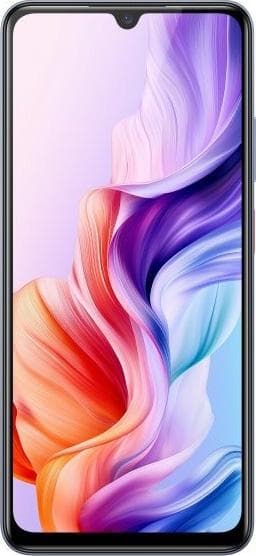- Archive
- ZTE Blade V70 Max review

ZTE Blade V70 Max review

The ZTE ZTE Blade V70 Max ranks as the #957 phones globally, achieving a LibraScore of 36. Across all metrics, this product stands out most for its #905-ranked battery among 800 phones. Consider the Xiaomi Redmi A5 or Infinix Smart 8 Plus, which offer higher scores while staying in the same price range.
Build Quality and Design
The ZTE Blade V70 Max boasts a robust, no-frills design with a plastic frame and 8.3 mm thickness, offering a sturdy feel despite its budget positioning. Its 2.5D curved glass and frameless display enhance modern aesthetics, while the 84% usable surface ensures a seamless screen experience. Available in Blue, Gold, and Green, the device balances practicality and style. Though not built with premium materials, its thick profile and water-drop notch contribute to a durable, ergonomic build. The non-removable battery and dual SIM support underscore its focus on reliability for everyday use, prioritizing longevity over flashy design elements. For an improved design, ZTE Axon 70 is worth considering.
Battery Life
The ZTE Blade V70 Max shines with a 6,000 mAh battery, ensuring all-day usage without frequent recharging. Paired with 22.5W fast charging, it replenishes quickly, minimizing downtime. The power-efficient 120Hz LCD display and optimized hardware balance performance and energy conservation, making it ideal for users prioritizing longevity. The non-removable battery integrates seamlessly into the sturdy build, while the device’s low-power components further extend runtime. Whether for casual browsing or light multitasking, the Blade V70 Max delivers reliable endurance, catering to those who value uninterrupted usage without compromising on battery-centric design. You might want to check out ZTE Axon 70, featuring an upgraded battery for a superior experience.
Display
The ZTE Blade V70 Max features a 6.9-inch LCD IPS display with a 120Hz refresh rate, delivering smooth scrolling and responsive visuals for everyday use. Its 720x1612 resolution (256 PPI) and 20:9 aspect ratio offer a decent balance of clarity and screen real estate, though the modest pixel density may feel less sharp for high-detail content. The 2.5D curved glass and frameless design enhance the modern aesthetic, while a 500 nits brightness ensures visibility in bright environments. A water-drop notch houses the front camera, preserving the immersive screen experience. Though not a flagship display, its power-efficient panel and 120Hz support make it practical for casual browsing, video playback, and light gaming, prioritizing usability over premium visual fidelity. Take a look at ZTE Axon 70 - its improved display sets a new standard.
Camera
The ZTE Blade V70 Max’s camera system leans on software-driven enhancements over hardware innovation. A 50MP rear main sensor (f/1.8, BSI) pairs with 2MP and 0.8MP secondary lenses for depth and macro shots, but real-world performance reveals limitations in dynamic range and detail retention. While the phase detection autofocus and HDR support aim to improve clarity, results often rely on aggressive processing, leading to over-optimized or flat-looking images. The 8MP front camera struggles in low-light scenarios, lacking the resolution or sensor quality to deliver sharp, natural selfies. Though the triple-lens setup suggests versatility, the Blade V70 Max prioritizes megapixel count over optical quality, making it better suited for casual snapshots than professional-grade photography. Users seeking vibrant, accurate colors or advanced low-light capabilities may find the camera underwhelming, as its budget-friendly components and software-centric approach limit true photographic flexibility. If you're after top-notch camera, consider Samsung Galaxy F06 5G.
Price and Value
The ZTE Blade V70 Max delivers budget-friendly value with a long battery life, smooth display, and durable build, making it ideal for users prioritizing reliability over flagship features. Its practical specs and affordable price position it as a no-frills option for everyday tasks, offering essential performance without premium costs.
Performance
The ZTE Blade V70 Max relies on a mid-tier processor and 4GB RAM to handle everyday tasks like browsing, streaming, and light multitasking with reasonable fluency. While it lacks the power for heavy gaming or intensive apps, its optimized hardware ensures smooth navigation and responsiveness for casual use. A 128/256GB storage option provides ample space for apps and media, and the 22.5W charging supports quick recovery. Though not a powerhouse, its performance aligns with budget expectations, balancing efficiency and practicality for users prioritizing reliability over high-end speed. Give ZTE Blade A56 a try—it’s designed to provide an unparalleled performance.
Pros
1. Long battery life with 6,000 mAh capacity and 22.5W fast charging for extended usage.
2. 120Hz LCD display with 2.5D curved glass and frameless design for a modern, immersive experience.
3. Durable build with 84% usable surface and water-drop notch for practicality and aesthetics.
4. Affordable price with essential features like dual SIM support and budget-friendly performance.
5. NFC and Wi-Fi 5 connectivity for seamless data transfer and networking capabilities.
Cons
1. Camera relies on software enhancements over hardware, resulting in limited dynamic range and detail.
2. Modest 720x1612 resolution on a 6.9-inch screen may feel less sharp for high-detail content.
3. Mid-tier processor and 4GB RAM struggle with heavy multitasking or resource-intensive apps.
4. Plastic frame and non-removable battery may feel less premium compared to metal-bodied rivals.
FAQ
Compare with other phones
See how this item stacks up against any other model
Choose two different items to see a detailed comparison of their specifications, performance, and features









